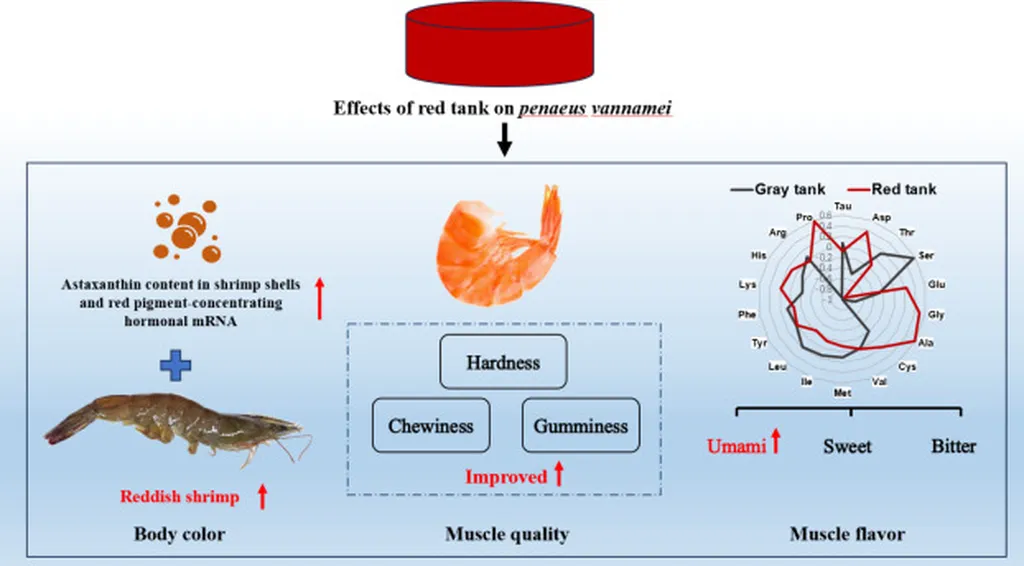In a groundbreaking study published in *Food Chemistry: Molecular Sciences*, researchers have discovered a simple yet effective method to enhance the color, texture, and taste of Pacific white shrimp (*Litopenaeus vannamei*) without the need for costly dietary supplements. The key? Rearing the shrimp in red tanks. This innovative approach not only improves the visual appeal of the shrimp but also boosts their market value, offering a promising alternative to traditional aquaculture practices.
The study, led by Manman Shi from the Key Laboratory of Aquaculture Nutrition and Feed at Ocean University of China, explored the intrinsic ability of decapod crustaceans to alter their body color in response to environmental backgrounds. “We hypothesized that rearing *L. vannamei* in red tanks would enhance redness, stimulate astaxanthin distribution, improve muscle texture, and enhance flavor without compromising growth performance,” Shi explained. The results, after a 75-day culture period, were striking.
Shrimp reared in red tanks exhibited a significantly higher redness (a* value) in both raw and cooked forms. This enhanced pigmentation is a critical quality attribute that significantly influences consumer preference and market value. “The reddish body coloration of Pacific white shrimp is a critical quality attribute that significantly influences consumer preference and market value,” Shi noted. The study found that the red tanks not only improved the color but also enhanced textural parameters including hardness, gumminess, and chewiness.
One of the most intriguing findings was the redistribution of astaxanthin, a pigment that gives shrimp their reddish hue. Astaxanthin content was elevated in the shell but reduced in the hepatopancreas, indicating a facilitated redistribution of the pigment. This redistribution was corroborated by the upregulation of the red pigment-concentrating hormone (rpch) gene in the hepatopancreas. “This redistribution was corroborated by the upregulation of the red pigment-concentrating hormone (rpch) gene in the hepatopancreas,” Shi said.
The study also detected increased levels of umami-related amino acids in the muscle of shrimp reared in red tanks, suggesting an enhancement in flavor. Although the survival rate was marginally lower, growth remained unaffected, making this method an economically viable and feed-free strategy to enhance the visual appeal and sensory quality of *L. vannamei*.
The commercial implications of this research are substantial. Aquaculture producers can now consider adopting red tank culture as a cost-effective alternative to dietary pigment supplementation. This method not only improves the quality of the shrimp but also reduces production costs, potentially leading to higher profitability.
Looking ahead, this research opens up new avenues for exploring the effects of environmental color on other aquatic species. It also highlights the potential for further studies on the genetic and physiological mechanisms underlying color change and pigment redistribution in crustaceans. As the aquaculture industry continues to grow, innovative methods like red tank culture could play a pivotal role in meeting the increasing demand for high-quality seafood.
In summary, the study led by Manman Shi from the Key Laboratory of Aquaculture Nutrition and Feed at Ocean University of China presents a promising alternative to traditional aquaculture practices. By rearing shrimp in red tanks, producers can enhance the color, texture, and taste of Pacific white shrimp without the need for costly dietary supplements. This method offers a simple yet effective solution to improve the quality and market value of shrimp, paving the way for future developments in the field of aquaculture.

